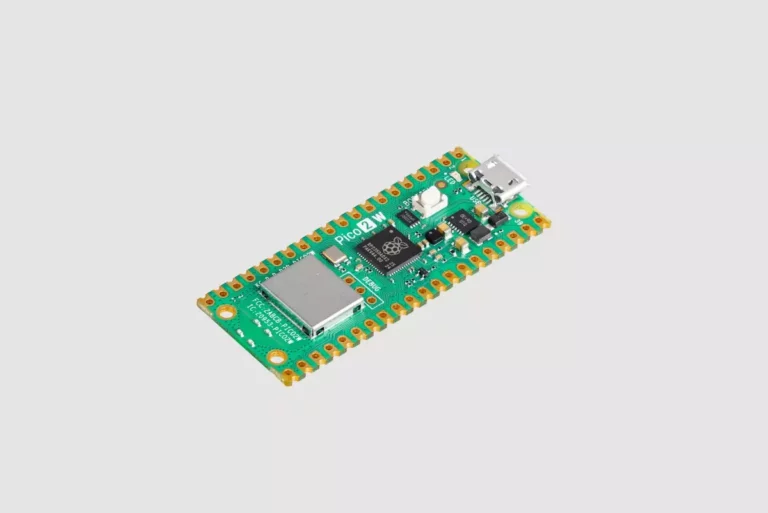The Raspberry Pi Pico 2 W stands as a compelling addition to the growing family of microcontrollers, combining affordability with robust features, making it an excellent choice for hardware enthusiasts and developers alike. With the introduction of this new microcontroller board, Raspberry Pi continues its legacy of promoting innovation and creativity among tinkerers and professionals in the tech space. This article explores the capabilities, configurations, and potential applications of the Pico 2 W.
At the heart of the Raspberry Pi Pico 2 W is the RP2350 microcontroller, a chip tailored for controlling a variety of electronic components. It’s important to distinguish between general-purpose single-board computers like traditional Raspberry Pis and specialized microcontrollers. While a standard Raspberry Pi runs a full operating system and handles a broader range of computational tasks, microcontrollers are optimized for specific applications, often interfacing directly with other hardware. Their compact size, efficiency, and low cost make them a staple in DIY electronics and industrial applications alike.
For hobbyists and developers, microcontrollers often represent a gateway into the world of electronics. Many beginners opt to use breadboards for their initial projects, facilitating a no-solder approach that allows for easy modifications. The Pico 2 W continues this trend, offering a user-friendly platform with numerous input and output pins (denoted by the small yellow holes around the board) that enable interaction with a vast array of sensors, motors, and other devices.
The Raspberry Pi Pico 2 W is equipped with a dual-core processor operating at a frequency of 150MHz, capable of supporting both Arm Cortex-M33 and open-hardware Hazard 3 RISC-V cores. This flexibility provides developers with significant customization options, allowing them to select the best architecture for their specific projects. Such configurability does not confine users to one particular architecture when purchasing the board, thus enhancing versatility and adaptability for a variety of applications.
With 4 MB of onboard flash memory and 520 KB of SRAM, the Pico 2 W offers sufficient storage for managing code and performing operations. While these specifications might not define a computational powerhouse, they are more than adequate for microcontroller tasks, which often involve simpler, repetitive processes. Whether it’s controlling motors in a robotic project or reading data from sensors, the Pico 2 W is tuned for efficiency and productivity rather than sheer performance.
The Pico 2 W caters to a wide range of developers through its software support, allowing programming in multiple languages including C, C++, and MicroPython—a lightweight, Python-inspired language widely favored in the maker community. MicroPython’s accessibility lowers the barrier for entry for those who may not have extensive programming experience, thereby fostering a more inclusive environment for creators of all skill levels. This flexibility in coding options encourages rapid prototyping and iterative development, key principles in modern hardware innovation.
One of the standout features of the Pico 2 W is its wireless connectivity, offering support for Wi-Fi (2.4GHz 802.11n) and Bluetooth 5.2. While the absence of 5GHz Wi-Fi support may be a drawback for some, it still provides ample capabilities for numerous applications ranging from home automation to IoT devices. For projects where wireless functionality is unnecessary or a cost concern, Raspberry Pi provides a wired version at an even lower price point.
Raspberry Pi’s strategic shift towards industrial and embedded systems, accounting for 72% of its sales post-public listing, reflects a growing trend in the manufacturing sector toward affordable and accessible microcontrollers. The option to purchase individual Pico 2 W units or in larger quantities, such as 480-unit reels, underscores Raspberry Pi’s commitment to supporting both individual enthusiasts and larger-scale commercial applications.
The Raspberry Pi Pico 2 W encapsulates what makes microcontroller projects engaging and feasible. Its combination of affordability, flexibility, and user-friendly features positions it as a key player for both hobbyists and professional developers. As the tech landscape continues to evolve, innovations like the Pico 2 W will likely drive a new wave of hardware creativity, pushing boundaries and inspiring projects that we have yet to imagine. Whether you’re starting your journey in electronics or seeking a robust microcontroller for more complex applications, the Pico 2 W warrants serious consideration.


Leave a Reply